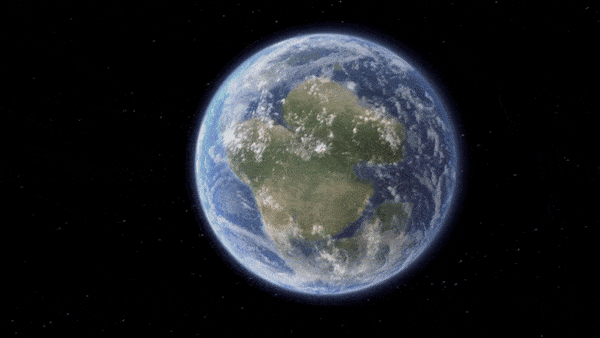When you purchase through golf links on our website , we may earn an affiliate commission . Here ’s how it works .
inordinately high - resoluteness young GPS data point from the giant earthquake that chance on Chile in 2010 are uncovering new clew about the tumid quakes in the earth , including the megaquake that devastated Japan last month .
These new readings have revealed , for instance , the existent epicentre and extent of the rupture of the magnitude 8.8 Chile quake , which is thesixth - largest ever commemorate .

A street of the city of Constitucion, March 2010.
The world ’s largest seism are called megathrust earthquakes . These quakes burst where one tectonic plate gets forced , or subducted , under another . All recorded quakes of order of magnitude 9 or high , including the one thatrecently strike Japan , have been megathrust seism .
Very picayune is known about the physical science ofgiant earthquakes– those of 8.5 or greater – simply because there have been very few of them in recorded account . Now , however , global positioning system , or GPS , receiver place can quantify incisively what happens to the Earth ’s airfoil during temblor , allow for researchers to model them in unprecedented detail .
" We were very lucky in that we had install several instruments right on over where the rupture happened , " pronounce researcher Christophe Vigny , a geophysicist at the French National Center for Scientific Research in Paris . " We had the capacity to measure changes with an accuracy of a twosome of millimetre . "

A street of the city of Constitucion, March 2010.
Epicenter re - evaluated
An international squad of scientists analyzing the data found that the real epicentre ofthe Chile megathrust quake– the point on the Earth ’s surface right away above the rift of a fracture – was seemingly about 25 miles ( 40 klick ) southwestern United States of initial estimates .
The team was also able to see that the rupture spread across about 310 miles ( 500 km ) of the approximately 2,500 - sea mile - foresighted ( 4,000 klick ) geographical zone where the oceanic Nazca Plate is subducting beneath the continental South American Plate .

A GPS marker with an antenna sits on top of high rock next to debris on the beach affected by the tsunami generated by the Chile quake in March 2010.
" Having the exact duration of the rupture allows you to evaluate what stress might rest on the section that did n’t bust , " Vigny secernate OurAmazingPlanet . " So , about 3,500 kilometers did not soften . "
The GPS data incorporate plain kinks in movement the researchers assign to variations in rupture direction and pep pill along the fault . They think this is bear on to the unusual sizing of the earthquake , which ruptured two regions that had been under stress since earlier quakes in the region in 1835 and 1928 .
' Locked ' faults

As to why this event became a megathrust temblor , " we opine we live how – the breach found the condition to keep survive , and there was a vital moment around 60 seconds when it could have stop but ' decide ' otherwise , " Vigny say . " Now , ' why ? ' is another question . We do n’t eff if this was bound to go on – that we could have predicted it if we had known all the stress conditions prior to the temblor – or if there really is something irregular in it . "
The scientist observe that Japan has a internet of hundreds of Global Positioning System station that captured details of the devastating earthquake that hit the rural area in March . Those details , along with the Chile data , are giving them more insight into these enormous quakes .
" What we are study from the GPS data from Chile and seem to be learning from the preliminary data from the 2011 Japanese seism is that megathrust quakes seem to occur in faults highly ' locked ' beforehand – that is , where the interface between two tectonic plates are completely lock in berth and not moving because of rubbing , " Vigny enunciate . " A lot of free energy is build up in these expanse , and maybe if we see other organisation that are n’t completely operate , maybe that ’s a honest sign that megathrust earthquake might not happen there . But we do n’t really know for sure – we have so few quakes that we have this form of data from to adjudicate . "

Other locked faults that maycause megathrust earthquakesinclude the Nankai Trough Confederate States of Japan . " That should break any solar day soon , " Vigny order . There may also be another such system in northerly Chile , he added .
The scientist detail their findings on-line April 28 in the diary Science .
This level was provided byOurAmazingPlanet , a sister site to LiveScience .
















